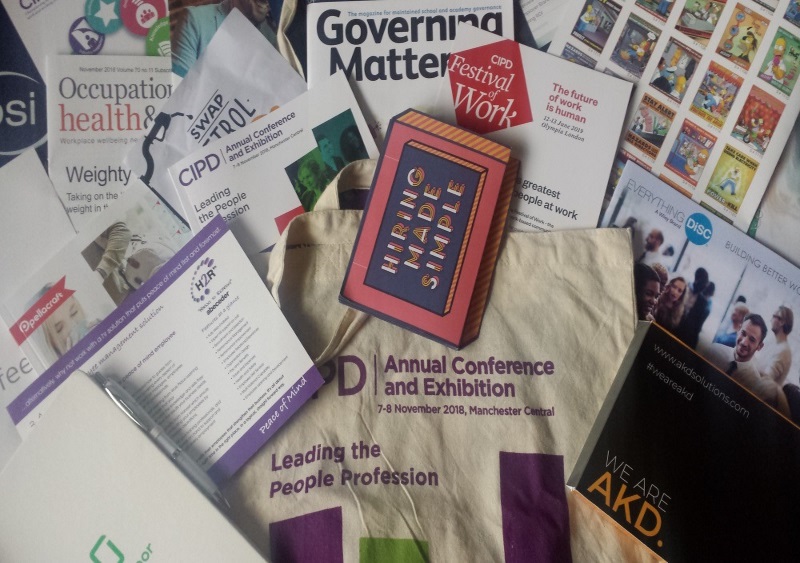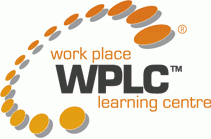Guide to dealing with exhibition brochures
I hope that you had a good day at the exhibition, now it's time to sort out all the brochures that you collected

Just before the CIPD annual exhibition and conference I shared with you a few tips for making a visit to the exhibition a success. There is after all so much to see and if you are not careful you can end up needing a forklift to carry all the brochures and paraphernalia back home.
I know that most of you will stop reading at this point because you followed the tips in that first article and only have the information that you really need.
Who are you kidding? We all know that there were some stands where we got into a conversation over a chocolate and it just would not have been polite to say no so, we all ended up adding to our collection of paperwork!
Now that you have it, I would resist the temptation to throw what may turn out to be valuable information. You just need to work out a way to deal with it.
The best place to start is by reviewing the objectives you set for attending the exhibition in the first place.
Make sure that you have information from all of the companies that were on your hit list of must visit stands. If you are missing some, use the information in the show guide to contact them and let them know what you are looking for.
Then set aside some time to review the information that you have collected. Probably at least an hour, but not at the start or the end of the day, it is too easy to be distracted.
Clear your desk, or if this is too daunting a task book a space that will allow you to focus.
You will need
- Some Post-it notes, they really are the best way to add notes to brochures.
- Highlighter pens, to pinpoint the important information.
- Spare carrier bags - these are useful for storage
- A good supply of tea/coffee and chocolate biscuits.
Then the FirstEleven™ things to remember about sorting out the brochure bag(s) are
1. Remember to sort out all the trinkets you have collected, note any contact details that you don’t have elsewhere.
If it is going to be useful put them to one side, if not put them in an area where your colleagues congregate and allow people to take their pick, first come first served, and send what is left at the end of the day to a charity shop or play group.
I picked up a yoyo from one stand, they’re great for stress release, but it broke the first time I tried to use it.
Put all the items that will be useful at work in a carrier bag and send them to the stationery cupboard.
Put what is left in another bag and send it to a charity shop. Do that immediately, any delay and yo will never get around to it.
There is one freebie that is never a trinket or trash, the chocolates, although there were not as many this year as there have been in the past.
If you still have any left share these with your colleagues, they will as a result be more interested in your going again next year!
2 Remember to put the brochures into subject related piles. Use any carrier bags you have to store these. Clearly label each bag.
I was pleased to see that most of the bags available were canvas rather than the dreaded plastic. Once you have finished with the canvas bags, they are great for keeping shoes in or growing vegetables.
If you have any plastic bags, think of the oceans and make sure that you or someone else re-uses them. Do not put them in the bin
3 Remember to prioritise the order in which you will review the contents of each bag.
Use your objectives to help.
Remember that time spent on subjects that don’t help you achieve your objectives is time wasted.
If you have something that will help someone else with their objectives give it to them.
4 Remember to read the brochures: don’t just look at the pictures. If you don’t read them, you will have carried them for nothing.
Highlighter pens are a great way to later identify the important pieces of information, amongst the sales patter.
If you need more space, use a Post-it note at an appropriate point. Writing notes on separate sheets of paper tends not to work, it is far better to keep everything in the brochures
5. Remember to create something that collates your knowledge in one place. A comparison table of features, benefits, costs is a good idea.
6. Remember the show catalogue is one of the most important pieces of information you will have collected.
Highlight the companies you met in one colour and those you would have liked to in another.
Keep the show catalogue in a SAFE place and DON'T lose it
7. Remember to share your new knowledge with other people,
Create story boards with the information or do a presentation.
Make it easy for people to understand and prove that your time at the exhibition was time well spent.
8. Remember to It's nice to be nice
The sales person that you met has a job to do and contacting you after you shared your contact details on a stand at an exhibition is part of that role. If you have changed your mind or decided as part of your review that you do want to buy from a company tell them so when they contact you and explain the reasons why.
9. Remember to contact the companies you have short listed or want additional information from.
Do not wait for a company to contact you, they are likely to be very busy. Take the initiative and do all the action points you promised either at the show or during follow-up conversations.
10. Remember to store the information you have collected in an easily accessible and clearly understandable system. You may need to get hold of it quickly.
11. Remember to make your stored information dynamic.
If you are interested in a company set up a Google alert so that you can keep track of
- what they are doing, and potentially identify issues that will rule them out of becoming a supplier.
- product reviews or new brochures
- any information that is no longer current.
If you have tried any of my hints when you have been attending an exhibition, whether it has been a large or small one let me know what impact they had on your visit.
Members of the Work Place Learning Centre team are available to provide journalists and media organisations with expert comment on all aspects of learning at work.
View our editorial policy click here.
